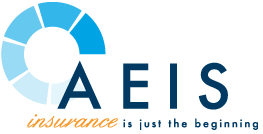What is a Benefits Administration Platform?
Written by: Ron Bland, GBDS
Table of Contents
- Benefits Administration Technology for Businesses
- Key Features of a Benefits Administration Platform
- Why Use a Benefits Administration Software?
- Steps to Finding the Right Benefits Administration Platform
Benefits Administration Technology for Businesses
In the modern era, employee benefits have truly never been more important to a business. Not only do people tend to look at benefits packages even more than salary when it comes to deciding where to work, but it also goes a long way towards cutting down on employee churn by keeping existing workers satisfied, too.

But as is true with most human resources and administrative processes,
benefits administration can take a great deal of time. Not only do you have to think about healthcare coverage but also life insurance, dental, vision, disability insurance, and more. Anything you can do to streamline these processes frees up the valuable time of HR professionals to focus on more important matters — which is where benefits administration technology for businesses comes into play.
Key Features of a Benefits Administration Platform
A business administration platform is, in part, designed to automate and streamline as much of the traditional employee benefits management and selection process as possible. Rather than having people fill out reams of paperwork just to sign up for the benefits your company offers, everything is handled by a convenient and easy-to-use digital system.
Depending on the type of platform you choose, there may be integration with your medical and ancillary carriers so that enrollments, terminations, and changes are automatically sent over via EDI feeds — thus saving an organization's human resources department quite a bit of time and money as well.
There are two types of Benefits Administration Platforms, one that is not integrated with your Payroll but may share information through EDI feeds or by downloading/uploading Excel spreadsheets, and one that is fully integrated and part of your payroll platform. Examples of non-integrated Benefits Administration Platforms are Ease or Employee Navigator. Examples of fully integrated Benefits Administration Platforms are Rippling or Gusto.
While every platform will be different, some of the key features that any business administration platform should offer at a bare minimum include ones like:

- Online Benefits Enrollment, including signing the forms digitally
- Ability to customize various contribution modeling
- Employee communication tools to send information to employees about critical dates and deadlines
- Document Management to store important and required benefit plan documents, including the Summary of Benefits Coverage and Annual Required ERISA Notices
- Support for managing life events that trigger a Qualified Life Event so employees can make changes
- Ability to generate reports on benefit utilization, enrollment trends, and other relevant metrics
Why Use a Benefits Administration Software?
By far, the number one reason to use a benefits administration software platform has to do with the amount of time a business can save. Some estimates say that it could take up to an hour per employee for an HR professional to complete basic tasks like checking for duplicate data, answering questions that employees might have, preparing benefits packages, and more.
Even if yours is a very small business with only 10 employees, that's still roughly a full workday that is devoted to these routine tasks. If they could be automated, think about what more productive work that person could accomplish in a day.
As is true with most types of automation, benefits administration software also goes a long way towards reducing errors at the same time. The more manual paperwork you're dealing with, the more likely that mistakes can be made. If information isn't being entered flat out incorrectly, you may have duplicate data entries that you're not even aware of until it's too late.
Automating data entry reduces not only the amount of work that someone has to do but also the number of potential mistakes they can make. As a bonus, a lot of these platforms also directly integrate with organizations like insurance carriers, which further reduces the possibility of error.
A few of the other reasons why you would want to use benefits administration software include but are not limited to:
- Greater transparency than ever. Employees can see real-time cost calculations to help them instantly understand what their benefits will cost with each paycheck that they receive.
- Benefits analysis. Employers can take a look at which employees are utilizing benefits and which ones aren't, allowing them to meaningfully improve what they're offering in order to remain competitive in the marketplace.
- Superior satisfaction. Because benefits administration platforms are so easy to use, employees, employers, and all others can access critical information anytime, anywhere, and on virtually any device. This can help with the decision-making process, creating a system that is as easy to use as it is effective for everyone involved.
Steps to Finding the Right Benefits Administration Platform
Having said all of that, it's important to note that not all benefits administration platforms are created equally. If you want to guarantee that you find the right solution that meets the unique needs of your organization, there are several key steps to follow.
- Conduct research into what features you need and which solutions offer them. This will take a significant amount of time to get right, and if you can't afford to do so yourself, don't be afraid to delegate the responsibility to someone who can.
- Understand what you need. Where do your priorities rest when it comes to benefits? Why are these things so significant? Only by understanding your needs will you be able to find a solution that meets them.
- Know your options. At a bare minimum, make a list of three or four potential options that meet all the requirements you've just laid out.

5. Compare your options. Dive deep into each product offering and find out what makes each one unique. Look at things like not only features but customer support and training options as well.
6. Embrace product demonstrations. If a free demo is available of the software to help make your choice easier, request one, so you can see it in action.
7. Narrow down your options. Try to get your list down to one or even two options as the best candidate starts to rise to the top.
8. Compare your options one final time. If necessary, write a list of the advantages and disadvantages of each one to help illustrate the difference.
At that point, your ideal benefits administration platform should be clear, and you can begin the process of entering into a contract with the vendor you have selected.
If you'd like to find out more information about the major benefits of a benefits administration platform, or if you'd just like to
discuss your organization's own needs with a team of professionals in a bit more detail, please don't hesitate to
contact AEIS today.
About The Author:
Ronald L. Bland
President
Ron, a top insurance professional in the Bay Area since 1985, excels in creating cost-effective, comprehensive plans for business owners. His achievements include top-of-the-table status in the Million Dollar Round Table and speaking at the 2021 Top of the Table Conference. A Bay Area native, Ron graduated with honors from San Francisco State University and lives in San Mateo with his wife, Elaina, and their two children.




